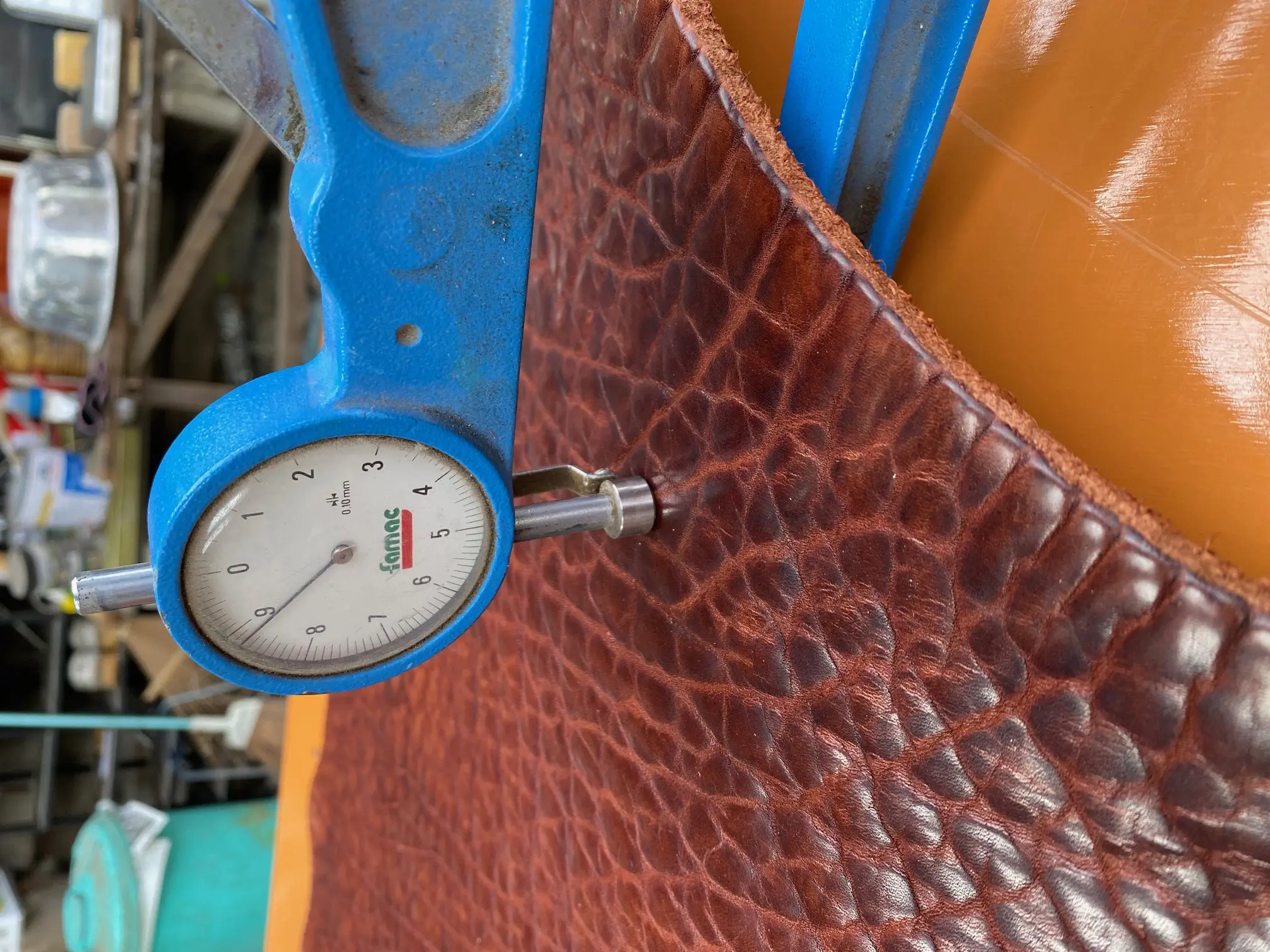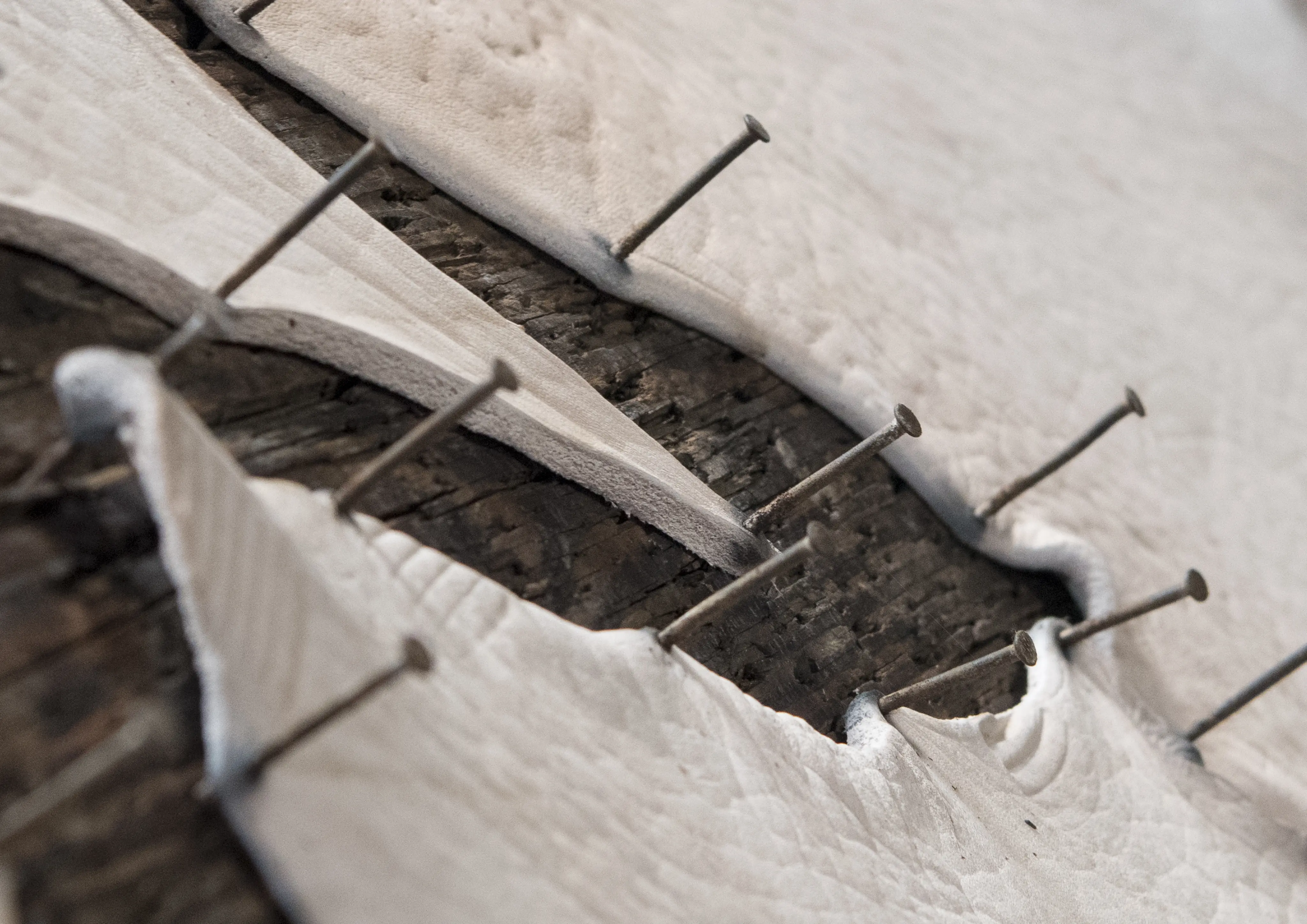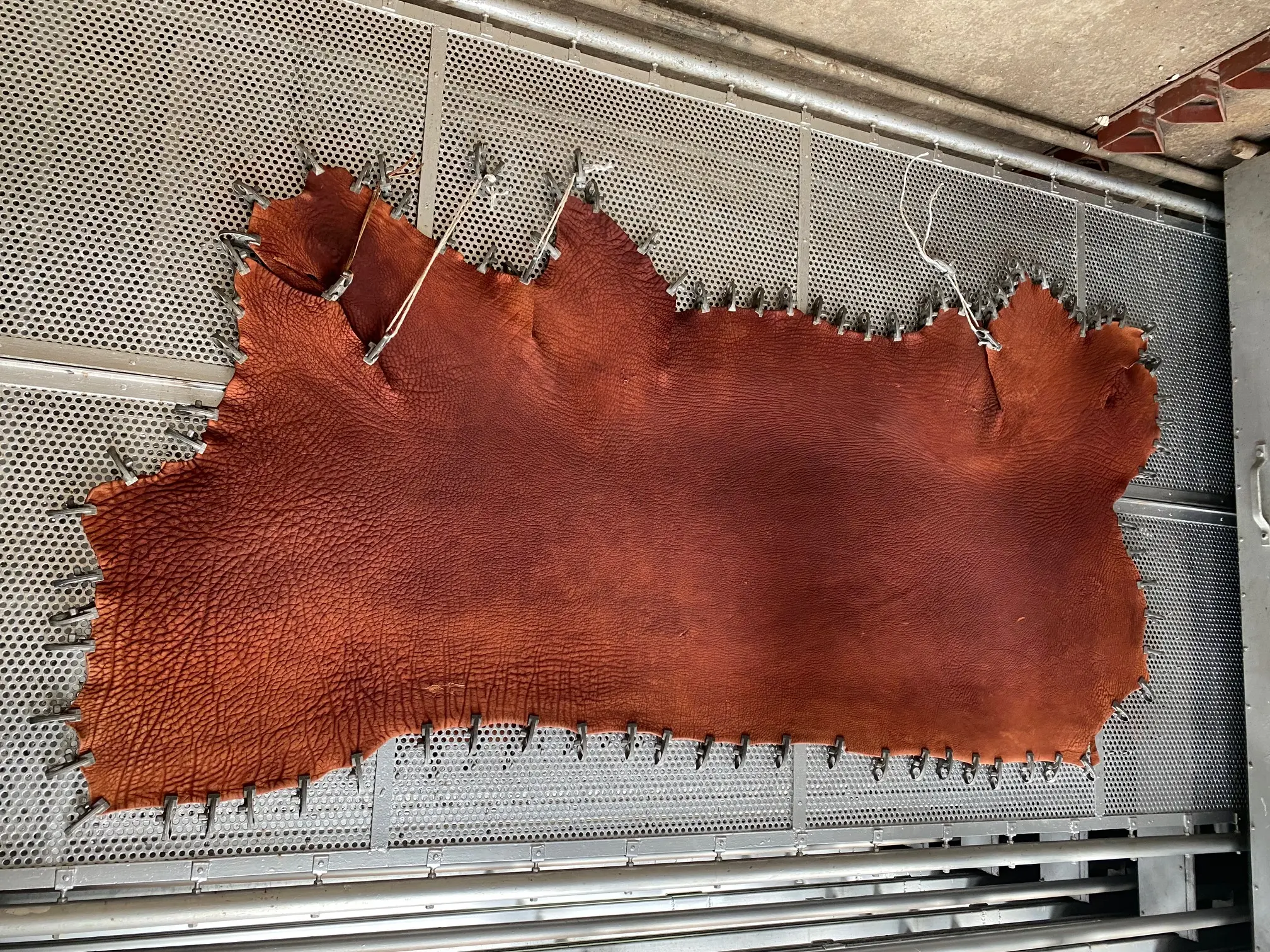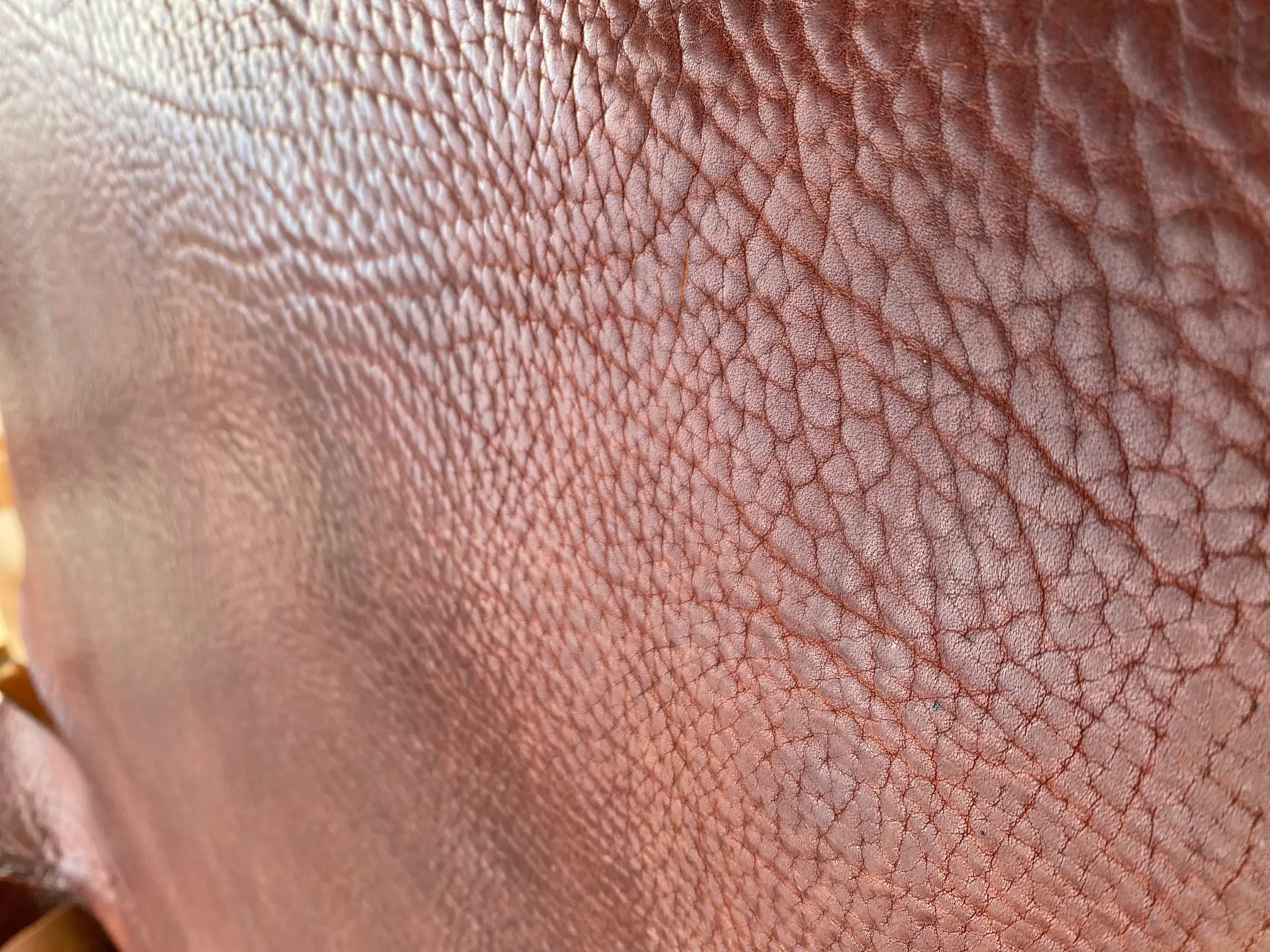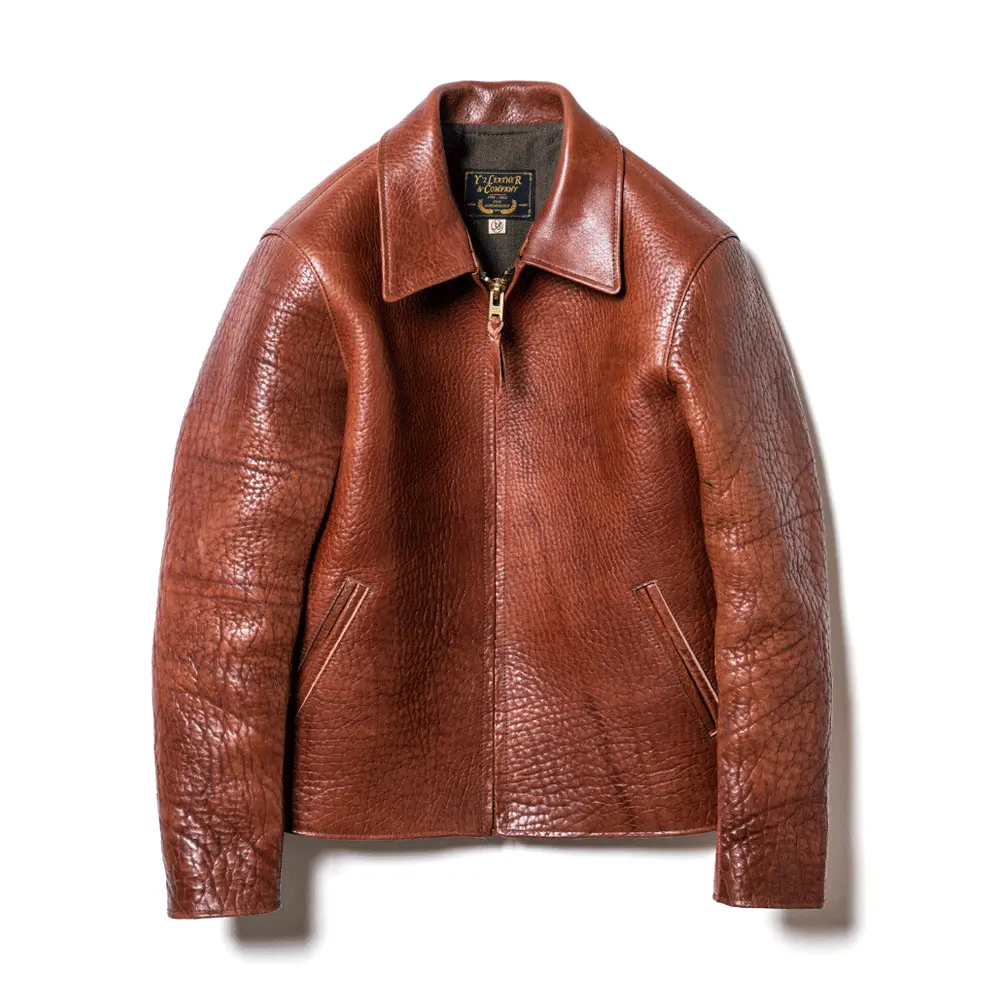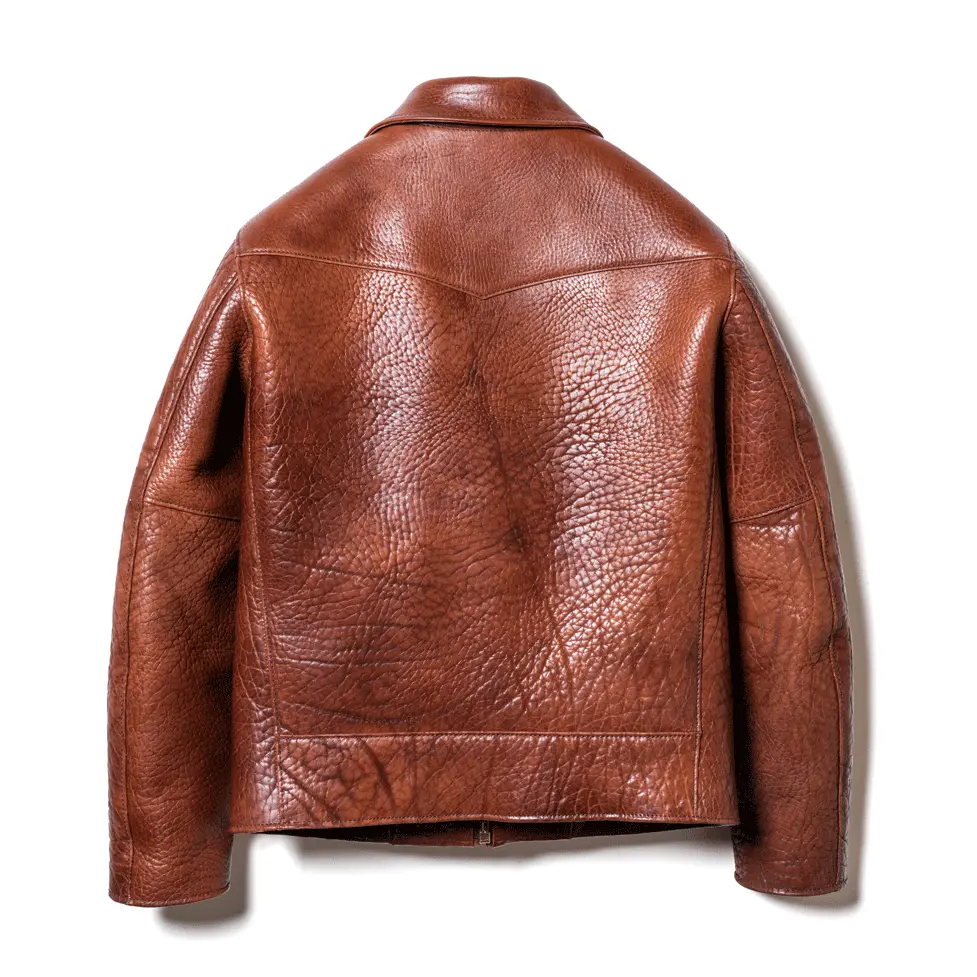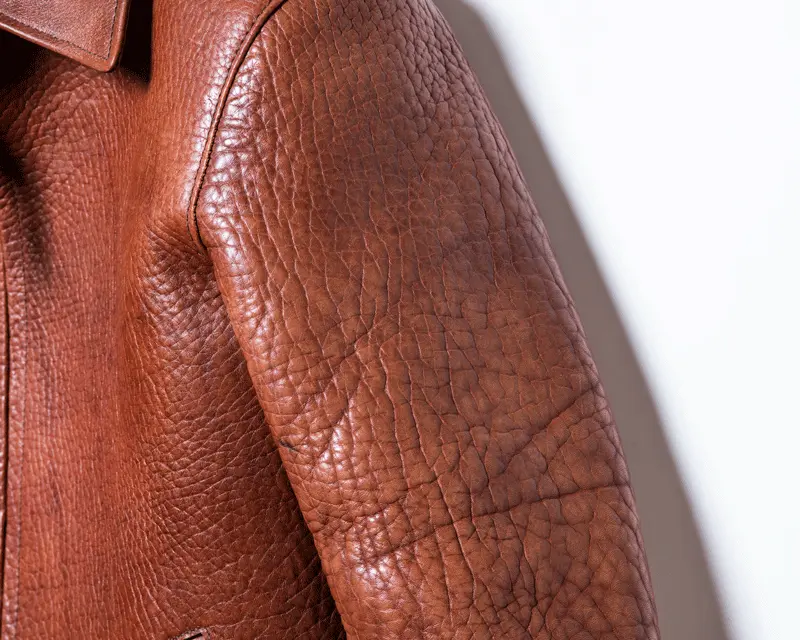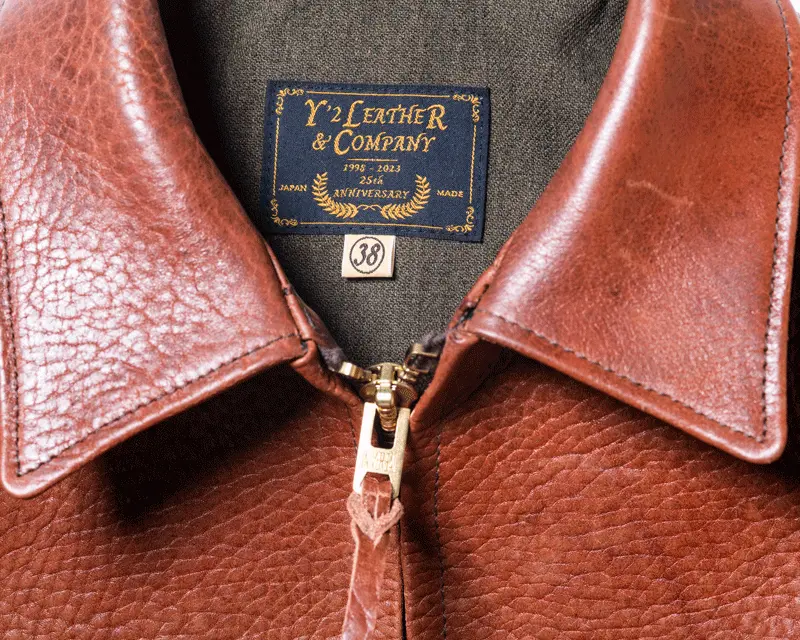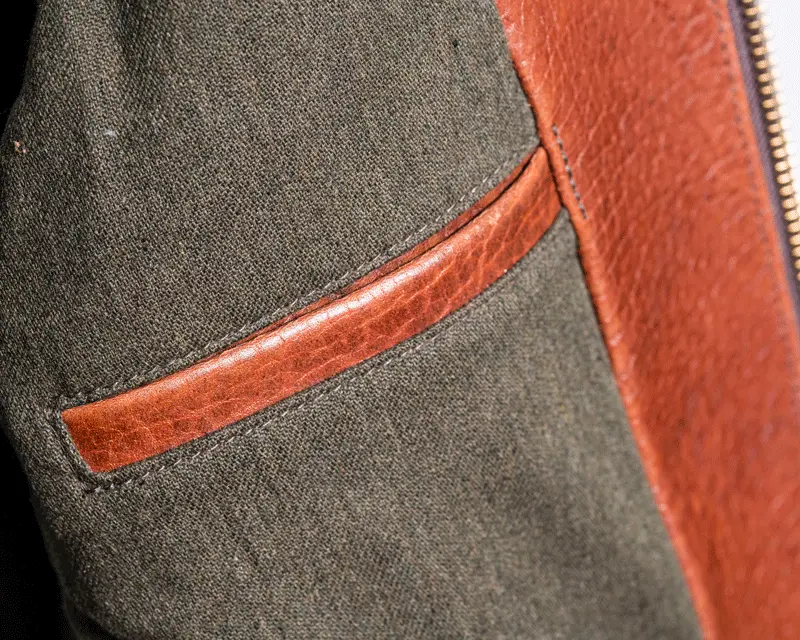2023.05.02
Challenge from the BULL HIDE (2)
As soon as I finished writing this blog the other day, I went to a tannery in Himeji to check the finish of a bull hide.
I was very nervous when I arrived in Himeji, but the finish was perfect.
The thickness, color, gloss, oiliness, etc. are all as I had imagined.
I was thinking of skipping this update, but after my last blog entry, I received many "passionate" requests for (2) from both Japan and overseas.
So, I would like to introduce "Challenge Letter 2 from Bull Hide".
First of all, please check the first picture.
It is 8.8mm thick.
This is the thickest part, but it is the first time I have seen this thickness.
I would like to proceed with this as it is, but it is indeed impossible, so I will split it evenly into 3mm.
To make the leather as thick as possible, we did not do any rough straining.
Therefore, the thickness of the leather varies from 8.8mm to 7mm.
The thickness of the leather is quite thick, so it is very difficult to split the leather.
After carefully dividing the leather into 3mm pieces, the cutting process begins.
Each part is cut with a knife, but it is still a tough job.
Even if you are used to cutting with an eco-hose, it is not easy to cut by hand.
After the cutting is successfully completed, the next step is the straining process.
As a side note, the same goes for bullhide 3mm and eco-horse 1.3mm, once the leather is thinned to the desired thickness, it is then sewn again.
After cutting, the seam allowance and other parts are strained again.
If you do not want to make the leather thinner, you can leave it as it is, but if you want to make a beautiful shape such as a corner or a curve, you can make it thinner only in that area.
If there are too many areas to be thinned, the sewing process will be easier, but the finished product will be flimsy.
Therefore, the "thickness", "width", and "thickness" of the straining process vary depending on the leather material and design.
The "thickness" of the cloth is divided according to the location.
For example, if the thickness is 1.1mm, 1.9mm is made from 3mm leather.
Normally, the "difference" between strained and unstrained areas is less than 1mm, but in the case of bullhide, the "difference" is 1.9mm.
Because the difference is quite large, we strain at an angle so that the cross section of the strained area is not steep.
By doing so, the leather is finished gently from the thicker part to the thinner part.
It is difficult to describe, but the less "difference" in thickness, the fluffier the product will be.
After finishing the straining process, the sewing is finally done.
I was prepared for this, but 3mm is still a tough job.
We adjust the sewing machine carefully and take care of the unevenness of the "grain" which is unimaginable in other materials.
We carefully dropped the stitches one by one.
Stitching is hard work, but there is an even harder part....
After sewing, it is called "Donden," which simply means to turn the garment over from the reverse side to the front side, which is quite difficult.
It may take more than 20 minutes just to turn over one garment.
The female staff members were not up to the task.
Then, the finished garment is ready to be worn.
In addition to their own work, they think and act in a way that makes it easier for the next craftsman to do his job.
A fusion of each craftsman's skills.
Even those who are accustomed to a certain degree of thick leather in eco-horse, it is not easy to wear.
Not only the makers but also the customers give their all.
I think this product is truly appropriate for the 25th anniversary.
Of course, there will be no bullhide leather jackets in the lineup after next year.
It is still undecided if we will make one for the 30th anniversary.
We have stopped accepting new orders due to the limited leather stock and production.
However, some dealers may have secured the order.
Please contact your dealer if you are interested.
Delivery will be around the end of October.
Please wait for a while for completion.

